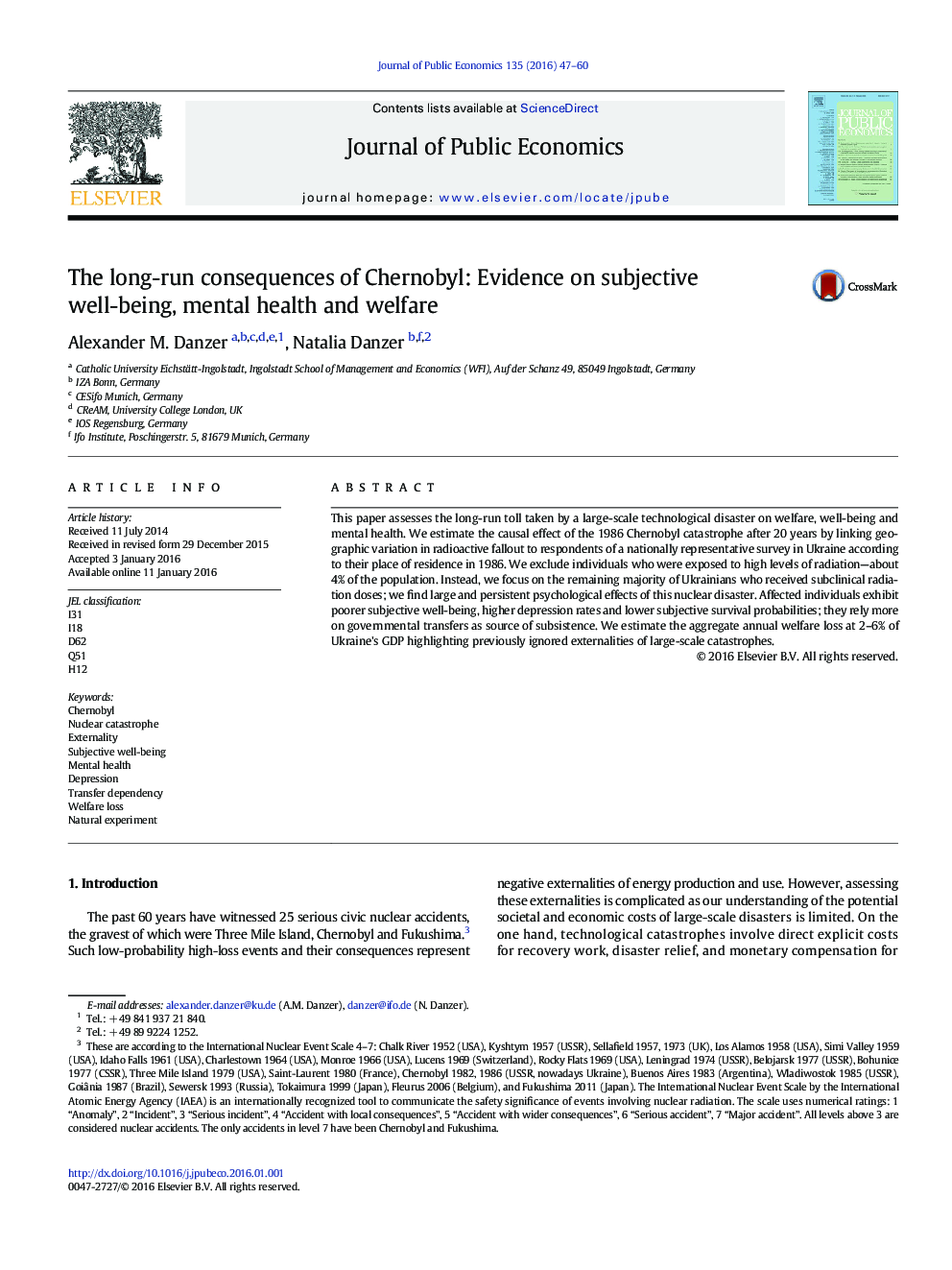| Article ID | Journal | Published Year | Pages | File Type |
|---|---|---|---|---|
| 968622 | Journal of Public Economics | 2016 | 14 Pages |
•The paper assesses the long-run toll taken by Chernobyl on welfare, well-being and mental health•The estimation uses radiation exposure as a proxy for disaster impact•More affected persons exhibit poorer subjective well-being, higher depression rates, lower subjective survival probabilities•The implicit aggregate annual welfare loss of mental distress is 2–6% of Ukraine's GDP, 20 years after the disaster
This paper assesses the long-run toll taken by a large-scale technological disaster on welfare, well-being and mental health. We estimate the causal effect of the 1986 Chernobyl catastrophe after 20 years by linking geographic variation in radioactive fallout to respondents of a nationally representative survey in Ukraine according to their place of residence in 1986. We exclude individuals who were exposed to high levels of radiation—about 4% of the population. Instead, we focus on the remaining majority of Ukrainians who received subclinical radiation doses; we find large and persistent psychological effects of this nuclear disaster. Affected individuals exhibit poorer subjective well-being, higher depression rates and lower subjective survival probabilities; they rely more on governmental transfers as source of subsistence. We estimate the aggregate annual welfare loss at 2–6% of Ukraine's GDP highlighting previously ignored externalities of large-scale catastrophes.
